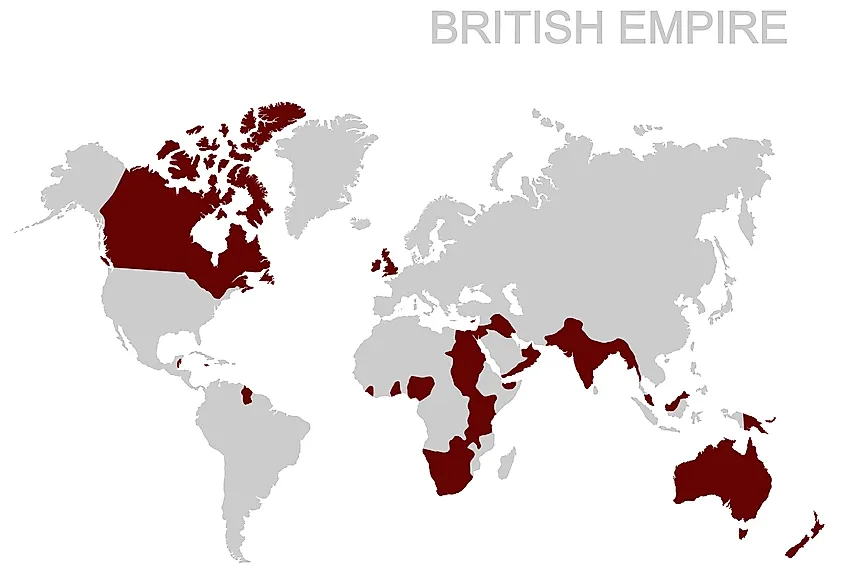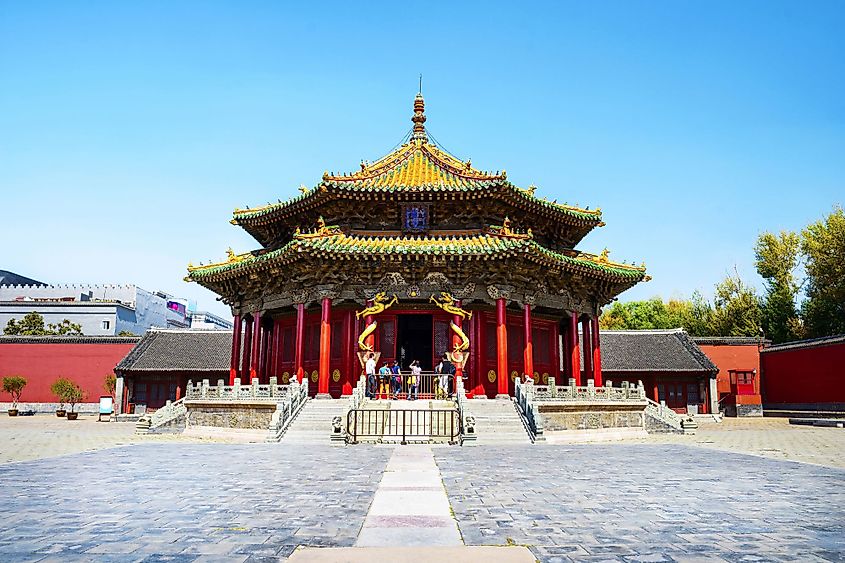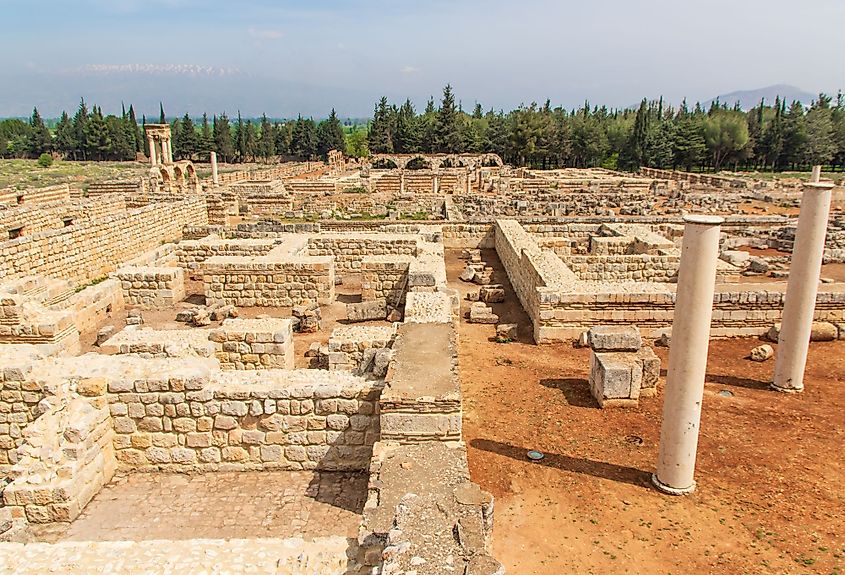The Largest Continuous Land Empire in History
Largest Empires In History
Almost since the beginning of human history, there have been empires that have controlled vast amounts of territory. Some of these empires managed to take control of territory that spanned two or more continents. Over time, however, empires gradually became a thing of the past, replaced by the modern nation-state. By the mid-to-late 20th century, the age of empires had all but ended, as most territories that were imperial possessions of certain powers gained their independence. Nevertheless, empires tend to leave a lasting legacy in the territory they conquer. In fact, they have helped shape the world that we know today. Here are the largest empires in human history:
| Rank | Empire | area in million km2 |
|---|---|---|
| 1 | British Empire | 35.5 |
| 2 | Mongol Empire | 24 |
| 3 | Russian Empire | 22.8 |
| 4 | Qing dynasty | 14.7 |
| 5 | Spanish Empire | 13.7 |
| 6 | Second French colonial empire | 11.5 |
| 7 | Abbasid Caliphate | 11.1 |
| 8 | Umayyad Caliphate | 11.1 |
| 9 | Yuan dynasty | 11 |
| 10 | Xiongnu Empire | 9 |
| 11 | Empire of Brazil | 8.337 |
| 12 | Empire of Japan | 7.4–8.51 |
| 13 | Iberian Union | 7.1 |
| 14 | Eastern Han dynasty | 6.5 |
| 15 | Ming dynasty | 6.5 |
| 16 | Rashidun Caliphate | 6.4 |
| 17 | First Turkic Khaganate | 6 |
| 18 | Golden Horde Khanate | 6 |
| 19 | Western Han dynasty | 6 |
| 20 | Achaemenid Empire | 5.5 |
| 21 | Second Portuguese Empire | 5.5 |
| 22 | Tang dynasty | 5.4 |
| 23 | Macedonian Empire | 5.2 |
| 24 | Ottoman Empire | 5.2 |
| 25 | Northern Yuan dynasty | 5 |
1. British Empire - 35.5 million km2

The British Empire was the largest empire in human history. It consisted of the colonial possessions of what is now the United Kingdom of Great Britain and Northern Ireland. Britain's imperial expansion began in the early 17th century. At its height in 1920, the British Empire controlled 35.5 million sq. km of territory. People used to say, "The sun never sets on the British Empire," because the empire consisted of colonies all over the world. But after World War II, British imperialism began to wane, as the United Kingdom granted independence to most of its colonial possessions. Former British colonial possessions include the 13 North American colonies that became the United States of America, Canada, Hong Kong, Australia, and New Zealand.
2. Mongol Empire - 24 million km2

The Mongol Empire spanned territory in both Asia and Europe. In fact, at its height, it controlled most of the former. The empire began with the unification of Mongol tribes under the leadership of Genghis Khan in the early 13th century. Within about a half century, the empire controlled a large part of Eastern Europe, most of Central Asia and most of China. At its height in the mid-to-late 13th century, the borders of the Mongol Empire stretched from the Sea of Japan all the way to western Asia Minor (Anatolia, present-day Turkey), covering an area of 24 million sq. km.
3. Russian Empire - 22.8 million km2

The Russian Empire began as the Principality of Moscow, which consisted of the territory surrounding the present-day Russian capital. In the mid-16th century, however, Czar Ivan IV began a campaign of expansion. By the mid-17th century, the Russian Empire had reached the shores of the Bering Sea, across from what is now the US state of Alaska. In fact, Alaska belonged to the Russian Empire at one time. By the late 19th century, the Russian Empire expanded to include territory in the Caucasus and Central Asia. At its height, the borders of the empire stretched from the northern coast of Asia to the borders of present-day Afghanistan and Iran, and from the Bering Sea in the east to the eastern border of Germany in the west, covering a total area of 22.8 million sq. km. Today, the Russian Federation still possesses much of the territory of the former Russian Empire, though the territory it once held in Central Asia, the Caucasus, and part of Eastern Europe is now part of other countries.
4. Qing Dynasty - 14.7 million km2

The Qing Dynasty was an imperial dynasty that ruled China from about the mid-17th century to the early 20th century. It was the last imperial dynasty in Chinese history before the country became a republic. The origins of the Qing Dynasty, however, were not Chinese, but Manchurian, which is why it is sometimes called the Manchu Dynasty. Manchuria is now the northeast region of China. In the 17th century, the Manchus conquered China and set up the Qing Dynasty after overthrowing the previous Ming Dynasty. At its height in the late 18th century, Qing territory comprised 14.7 million sq. km.
5. Spanish Empire - 13.7 million km2

The Spanish Empire was a vast colonial empire covering large parts of North and South America, the Caribbean, and smaller territories elsewhere. It began shortly after the states of Castile and Aragon in the Iberian Peninsula unified and completed what was called the Reconquista of the peninsula, or retaking of the peninsula from the Muslims in the late 15th century. At its height in the early 19th century, Spanish territory in North and South America, the Caribbean, Africa, and Asia covered a total of 13.7 million sq. km. Former Spanish colonies include Mexico, the countries of Central America, and most of the present-day nation-states in South America.
6. Second French Colonial Empire - 11.5 million km2
The Second French Colonial Empire began in the early-to-mid 19th century, following the period of the First French Colonial Empire. Like the UK, France once held many colonial possessions in all parts of the world. Its largest possessions were in Africa, while France maintained smaller colonies in the Americas, the Caribbean, and the South Pacific. At its height in the early 20th century, France's Second Colonial Empire spanned 11.5 million sq. km of territory. Former French colonies include the Northern African countries of Morocco, Algeria, and Tunisia, as well as most of the territory that now makes up Western Africa.
7. Abbasid Caliphate - 11.1 million km2

The Abbasid Caliphate was the third Islamic Caliphate to succeed the Prophet Mohammed, the founder of Islam. The Caliphate arose in the mid-8th century, when the Abbasids overthrew the previous Umayyad Caliphate. It was during the rule of the Abbasid Caliphate that Islam's Golden Age began. At its peak, the Caliphate's territory stretched from the western border of India in the east to the coast of North Africa in what is now Algeria in the west, totalling 11.1 million sq. km.
8. Umayyad Caliphate - 11.1 million km2

The Umayyad Caliphate was the second Caliphate following the time of the Prophet Mohammed. It succeeded the Rashidun Caliphate in the mid-7th century and lasted until the mid-8th century when it was overthrown by the Abbasids. The Umayyad Caliphate controlled about the same amount of territory that the Abbasids mentioned above did. At the dynasty's inception, it already controlled present-day Iran, the Caucasus, the Fertile Crescent, the Arabian Peninsula, and Egypt, but went on to conquer a large swathe of territory in coastal Northern Africa, reaching as far as the northern coast of present-day Morocco.
9. Yuan Dynasty - 11 million km2

The Yuan Dynasty was the dynasty that emerged to rule China as the vast Mongol Empire broke up into separate empires in the mid-to-late 13th century. At its height, it controlled all of present-day China, as well as Mongolia and the Korean Peninsula, for a total of 11 million sq. km of territory. In the mid-14th century, however, its power began to wane until it was finally replaced by the Ming Dynasty.
10. Xiongnu Empire - 9 million km2
The people who created the Xiongnu Empire were nomads living in the eastern Eurasian Steppe. The empire was founded by a person named Modu Chanyu in the early 3rd century BCE, and was centered in the territory that would later become the domain of the Mongols. At its height in the late 2nd century BCE the Xiongnu Empire's territory stretched from the Manchurian region of present-day China to about the eastern limit of Central Asia, and totalled 9 million sq. km of territory.
Source: https://www.worldatlas.com/geography/largest-empires-in-history.html
0 Response to "The Largest Continuous Land Empire in History"
Post a Comment